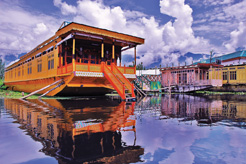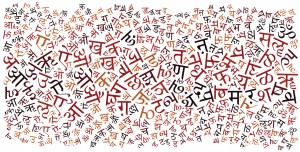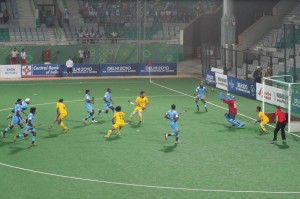THIS REPUBLIC DAY, DIVYA KHAIRAJANI DISPELS SOME COMMON MYTHS ABOUT INDIA
IS KASHMIR A PART OF INDIA?
Kashmir is an integral part of India that every Indian is proud of. We all fondly refer to it as ‘paradise on earth’ and flock there as tourists, but do we really know what went down in history?
As school children, we were all taught certain things about our country and have always believed them to be true. But, if we were actually to begin to question a few facts that we take for granted about India, we might all be in for a little surprise. If you thought you knew it all, this 26 January, I think it’s time to start off with a clean slate and burst all our little bubbles! Here’s a bunch of myth busters surrounding our beloved Sovereign, Socialist, Secular, Democratic Republic of India as we proudly celebrates its 66th Republic Day.
Where did it all begin?
It all began in pre-Independent India. During the British Raj, the British had divided the whole nation into various princely states for their administrative and political reasons. Later, the reorganisation of the ‘princely states’ was carried out and these states were to be divided on linguistic basis. These states were free to join India or Pakistan or remain independent. An ‘instrument of accession’, which is an agreement between the state and the government, was to be signed. Amongst 565 princely states, 562 signed the instrument and merged with India. Kashmir was one of the three states that did not sign the accession. Kashmir was a unique case. It was a state with a pre-dominantly Muslim populace, but was ruled by a Hindu King named Hari Singh. Singh originally attempted to maintain his independence by staying away from India and Pakistan. There was a common belief that rulers of the princely states, in deciding to accede to India or Pakistan, ought to value the wishes of their people, but most rulers didn’t do any such thing. Pashtun tribesmen from Pakistan invaded Jammu and Kashmir with the help of Pakistan’s government under the impression that Singh would accede to India. That was when Hari Singh cried out to India to lend him a hand. Although Nehru was ready to send troops, the Governor-General of India, Lord Mountbatten, advised Singh to accede to India immediately. Therefore, considering his predicament, the Maharaja signed an Instrument of Accession to join the Dominion of India.
Hari Singh signed the Instrument of Accession on 26 October 1947, acceding the whole of his princely state (including Jammu, Kashmir, Northern Areas, Ladakh, TransKarakoram Tract and Aksai Chin) to the Dominion of India. Indian troops were then sent to Srinagar to get the situation under control, but the Government of Pakistan refused to withdraw its troopfrom some areas which were occupiedby them. This created a dispute between both the countries thus leading to their first war over Kashmirin the years 1947-48.
What was India’s plan of action?
India then took the dispute to the United Nations. The UN asked Pakistan to remove its troops, after which India was also supposed to withdraw the bulk of its forces. Once this happened, a ‘free and fair’ plebiscite was to be held to allow the Kashmiri people to decide their future Later in 1950, the Indian government distanced itself from the commitment to hold a plebiscite. This was only because the Pakistani forces had not withdrawn their troops and the chance of making a decision was already lapsed. Pakistan has consistently maintained that the issue be resolved by the means of a plebiscite and has been blaming India ever since. While India and Pakistan continue to bicker, the Kashmiri separatists still demand a separate state.
Myth buster
After nearly seven decades and countless wars, Kashmir still remains an unresolved territorial conflict between three primary stakeholders –the Government of India, Kashmiri insurgent groups and the Government of Pakistan – over control of the Kashmir region. Just like Christopher Nolan’s Inception, there’s an internal conflict brewing within the conflict, between Kashmiri insurgents – a few are in favour of Kashmiri accession to Pakistan and others seek complete independence for the area. Parts of Kashmir may be disputed territory but India continues to toe the same line – Kashmir is an integral and inalienable part of India.
IS HINDI OUR NATIONAL LANGUAGE?
Hindi is the most commonly used language in our country. In many schools it’s compulsory for one to study Hindi. We have always assumed it is our national language. However, the truth is a little different
Who raised the issue ?
When a consumer named Mr. Suresh Kachhadia filed a PIL (Public Interest Litigation) in the Gujarat High Court seeking direction from the Central and State Government to make it mandatory for manufacturers to print details of goods like price, ingredients and date of manufacture in Hindi. The court promptly replied, “No command can be issued on any manufacturer for giving details of commodities in Hindi, since there is nothing on record that depicts Hindi is our National language.” There is no mention of national language being Hindi in the constitution of India.
Why didn’t the constituent assembly think of this?
Indeed, the makers of our constitution did feel the need to have a national language. They thought it was imperative to have a national language for administrative and court proceedings. There were more than 1,600 languages used in India at that time. More than 40% of the Indian population conversed in Hindi, the Muslims used Urdu and the elite used English. It made perfect sense for them to declare Hindi as the national language.
But, there were protests against such a move by non-Hindi speakers, especially from southern India. Hence, Hindi wasn’t declared as our national language.
Myth buster
Another reason could have been the fact that a large number of documents, books and laws were written in the English language. Had they declared Hindi as our national language, all the documents and laws would have had to be translated in Hindi, which would have been very cumbersome, bordering on impossible. So, the provision for ‘official language’ was made instead. So, it turns out that Hindi is not our national language, but is accepted as the official language with English and 22 other languages in India.
IS HOCKEY OUR NATIONAL GAME?
In India, Hockey has always been associated with nationalism. We, as Indians take pride in the fact that the Indian hockey team has been the most successful team in the history of Olympics
It’s safe to say that the movie Chak De India still gives us goosebumps. The very thought that we are rooting for our national hockey team battling it out for national pride is the sort of stuff that makes the hair at the back of your neck stand up. Frankly, I hate to be the one to burst your bubble. Hockey is not the national game of India. We may assume it is our national game but, the fact is that none of the sports played in the country enjoy the status of ‘national game’.
How was this revealed?
We’d have continued to be as ignorant as ever if it wasn’t for a school girl named, Aishwarya Parashar from Lucknow, who filed an RTI query (Right to Information) in 2012 to the Prime Minister’s office to seek official documents of declaration with regard to the same. She had also requested information on India’s national anthem, bird, symbol, flower and animal. The Ministry of Youth Affairs and Sports in its reply stated that the ministry has not declared any sport as the national game of India. Further in an explanation they stated, “The ministry had sports disciplines put into different categories. Hockey is one of the priority disciplines, but it is not a national game.”
The candid response from the Ministry has left hockey players fuming. “They should then tell us which the national game is and show us the notification which says hockey is not a national game,” says Olympian Sujit Kumar. Until this revelation, hockey was still glorified as our national game even on our National website ‘www.india.gov.in’ under the National Portal. After this discrepancy was reported, the website removed the heading ‘National Game’!
Then, why is Hockey assumed to be our national sport?
India first became world hockey champions in 1928, by winning the Gold Medal at the Amsterdam Olympics. Cricket fans believe that cricket should be declared as India’s national game, owing to our resounding success on an international level. In the same way, back then, patriotic hockey fans would have perceived hockey to be our national game since we were so successful in the sport at that time.
Myth buster
Much to the disappointment of sports fans across the country, nowhere is it explicitly mentioned that hockey is the national sport of India.
LIST OF LANGUAGES IN THE CONSTITUTION
(1) Assamese
(2) Bengali
(3) Gujarati
(4) Hindi
(5) Kannada
(6) Kashmiri
(7) Konkani
(8) Malayalam,
(9) Manipuri
(10) Marathi
(11) Nepali
(12) Oriya
(13) Punjabi
(14) Sanskri t
(15) Sindhi
(16) Tamil,
(17) Telugu
(18) Urdu
(19) Bodo
(20) Santhali
(21) Maithili
(22) Dogri
Volume 4 Issue 7
































